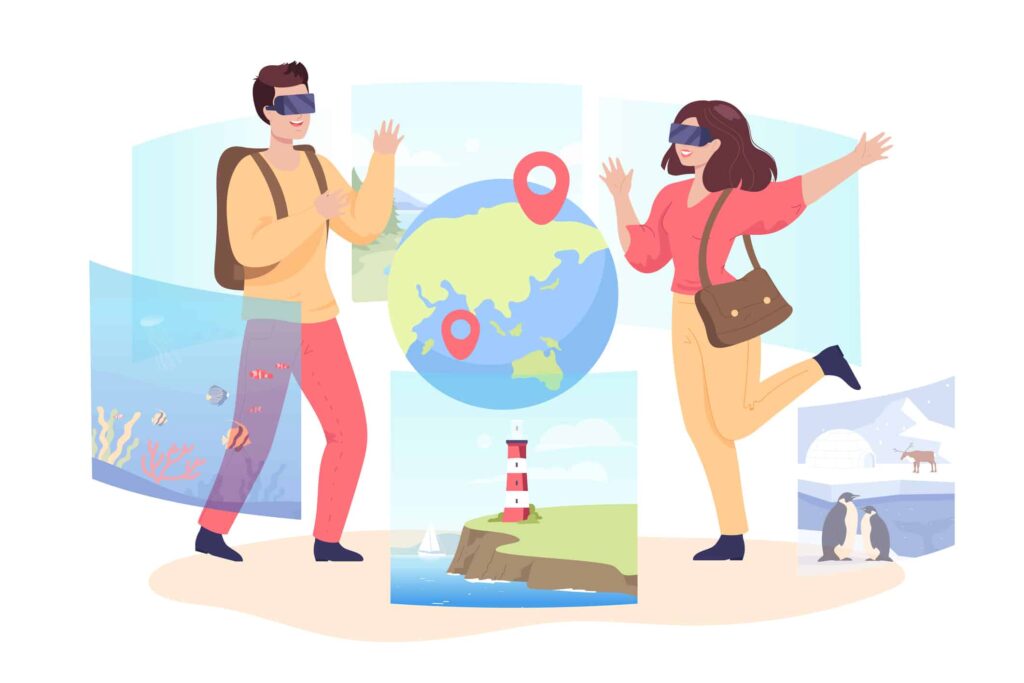
As tourists, we seek out novel experiences to regale our friends with cocktails, but between subpar hotel WiFi and losing maps, technology hampers more than helps. Yet, Augmented reality may change everything. From avoiding long ticket lines with mobile passes to unearthing hidden history with smartphone tours, this blog post sheds light on 15 ways augmented reality (AR) in tourism enhances the travel experience!
Whether you’re lounging on the tour bus or navigating new cities on foot, AR is here to help and entertain. Strap on your bright shades, and let’s digitally transport to the vacation of the future through the Technomic tour of AR’s best travel perks waiting just behind the looking glass.
Table of Contents
Why Augmented Reality Matters in Travel
The travel industry has already witnessed AR’s enormous potential. According to recent surveys, over 60% of travelers want destinations to offer AR experiences. Augmented and augmented reality in the tourism business checks many boxes:
Immersive
With multi-dimensional 3D constructs overlaid on the real world, AR allows tourists to vividly interact with life-like recreations of artifacts, landmarks, architecture and even lost heritage sites. Whether it’s visualizing the secretly guarded interiors of palaces or simulating dialogues with influential thinkers at ancient academies they once taught in; AR storytelling delivers deeply experiential tours de force.
By effectively replicating the sights, sounds, motions, and dimensions that made historical events and places come alive in their heydays, AR brings static exhibits, old sketches, and fading monuments back to tangible life in the present!
Informative
Beyond embellishing visuals, AR also serves up easily digestible and real-time contextual data for travelers on the move. Everything from names, unique attributes, and interesting origin stories regarding local dishes, cultural performances, or flora and fauna can be instantly accessible to tourists via interactive infographics, embedded mini-documentaries, and animated explainers. Want to grasp how Sake is brewed quickly, how Samba evolved, or how orchids are cultivated in a region? AR unlocks enriching insights on demand!
Date and distance-stamped commentaries and multi-lingual translation support also guide users smoothly across tricky foreign terrain, unfamiliar dialects, and cryptic clues. AR allows travelers to have reliable local guides in their pockets virtually! Even in the momentary absence of actual guides, human interpreters, or interpretative infrastructure on site, handheld AR apps keep tourists well informed throughout journeys.
Beat misinformation and traveling mishaps with the power of context-aware, interactive augmented reality. Switch physical maps and brochures for AR companions, promising guaranteed enrichment and convenience henceforth!
Convenient
Removing physical friction from travel itineraries is where AR proves invaluable. Forget congested pavilions, endless queues under the sun, and strict hours of entry at attractions!
AR-powered mobile apps allow visitors to digitally secure time slots for popular venues, play location-based games while waiting for their turn, take snack breaks mid-way through lengthy tours without losing wayfinding, etc.
Tourism itineraries are thus experienced at personalized paces rather than force-fed durations. By letting tourists be their guides but assisting navigation simultaneously to prevent them from getting overwhelmed in foreign settings, explorations happen fuss-free.
Vivid
In weaving fictional personas, culturally symbolic images, ambient sounds, language narrations, and even artificial scent dispensers into AR renderings, tourism apps truly deliver authentic encounters, not staged for benefit.
The ability of AR to vividly render intangible expressions like emotions, values, and mysteries through creative visual metaphors makes every tourist feel exceptions while discovering destinations.
It’s not mere information, but meaning transference happening here! Even brief AR sojourns amplify perspectives.
Memorable
What ultimately drives AR’s adoption across travel domains is its ability to craft shareable photo-realistic moments, not just disposable digital trinkets for social media.
For instance, rather than only posting nondescript selfies by landmarks, AR allows tourists to embed their smiling photos right onto the round dial of Big Ben or capture feeds with their images photoshopped onto vintage locomotives at railway museums!
Blending place histories with personal memories creates impactful, enduring chronicles worth collecting across trips. Photos turn magical, videos become Hollywood-esque productions, and friends envy your tech-savvy vacations!
Let’s explore how AR is already transforming travel-responsible tourism experiences end-to-end. From inspiration to reservation – transportation to recreation, AR is elevating the entire travel and tourism industry ecosystem promisingly!
15 Ways AR in Tourism Enhances the Travel Experience
Immersive Promotion of Destinations
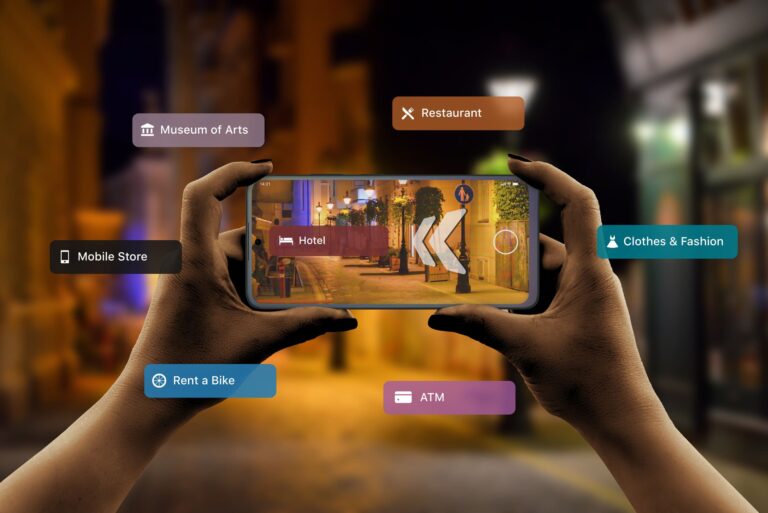
Travel ads and brochures often fall short of conveying the authentic vibe of destinations. AR builds immersive 3D renderings of landmarks, terrain, and architecture for potential tourists to explore digitally. From previewing hotel properties more accurately to virtual safaris through game reserves, AR gives a comprehensive feel for places.
Apps even incorporate seasonal variations at destinations – like simulating springtime in a summery advert for cherry blossom season. Such immersion drives bookings and shapes realistic expectations
Enhanced Trip Planning
AR makes travel planning ultra-efficient via multi-dimensional previews. Apps allow users to view 3D models of hotel rooms, coupled with VR facility tours and simulated views from windows. Menus scans showcase local delicacies through AR-enabled food visualization.
Trip routing recreations demonstrate tours’ actual momentum and pace based on distances and stopping durations. This granularity helps travelers select optimal hotels, restaurants, and itineraries. Some apps even estimate future crowds at landmarks using heatmaps.
Digital Guidebooks
Static guidebooks are fading out as immersive AR storytelling apps offer interactive explorations of destinations. Audio tours bring cultural insights to life via ambient sounds and contextual narrations – transporting users back in time! For instance, scanning certain collapsed pillars during an Acropolis AR tour may trigger battle sounds and animations depicting the Persian invasion. Philosopher avatar guides may appear from artifact scans to discuss Gladiator battles at the Colosseum. Want to peek into the secret passageways within the Great Pyramids? Special AR viewfinders reveal hidden chambers and treasures digitally!
Embedded pop quizzes add an educational angle, while 3D architectural constructs lead visitors smoothly across actual on-site terrain, aiding navigation. AR guide apps receive real-time updates regarding timed entries, pricing, special events, cancellations, etc. Their intuitive UIs, one-tap translation into over 100 languages, and shareable AR photo filters enhance travel more memorably than static guidebooks could ever! Discover destinations at your pace conveniently with AR.
Immersive Maps
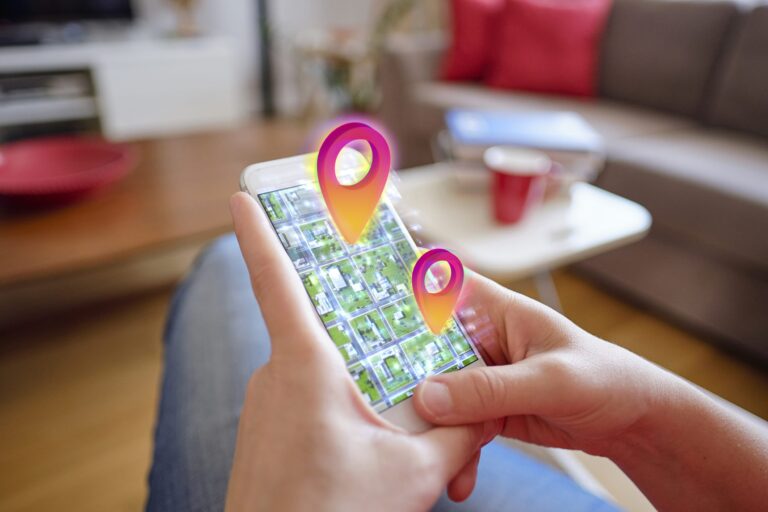
Without visual landmarks, navigating destinations can prove challenging. AR map apps leverage VPS or visual positioning systems to overlay animated walking routes, points of interest, etc, on real-world scenes.
Users can view directional arrows, destination distances, and 3D site models for intuitive navigation assistance by simply scanning surrounding streets through their phone camera. Advanced apps offer alternate routes to avoid congestion, teach commonly used local phrases interactively, and make personalized recommendations.
Virtual Queues
Serpentine queues can frustrate travelers, draining precious time and energy from sightseeing. AR-powered apps implement virtual queues and intelligent wait-time management to rescue travelers here. After securing digital queue tickets, visitors can explore nearby attractions through interactive augmented reality while their turn arrives.
Should the average projected queue duration increase unexpectedly due to a sudden influx of groups, the app alerts travelers to return earlier through push notifications. Such apps also occupy visitors with culturally relevant AR games, local trivia quizzes, and even digital souvenir shops for personalized memorabilia to pass the time meaningfully!
Thus, AR transforms once restless queue waiting, often under harsh weather, into more engaging, memorable micro-adventures indoors. AR empowers travelers to reclaim agency over their itineraries amidst external variables like crowds! No more helpless queueing up boringly, thanks to augmented reality-led smart queueing ways that delightfully
Gamified Sightseeing
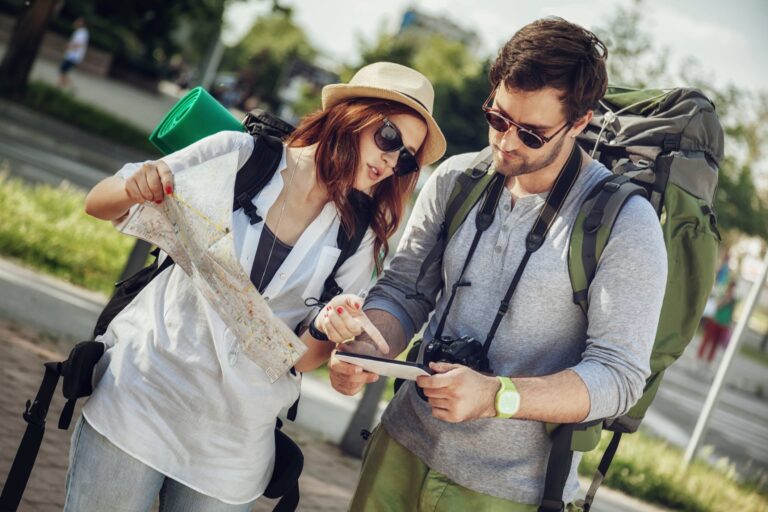
AR injects destinations with magical realism by gamifying journeys through fictional narratives and characters. Apps allow users to go on quests with mythical creatures, viewed via AR across actual landmarks.
Storytelling modes with branching narrative choices heighten engagement – whether it is joining Gandhi on his Dandi March or helping fictional detectives solve site-specific mysteries! Tourists earn points, unlock achievements, and collect souls for correct trivia answers. Such games blend education with entertainment for refreshed sightseeing and interactive experiences
Immersive Heritage Experiences
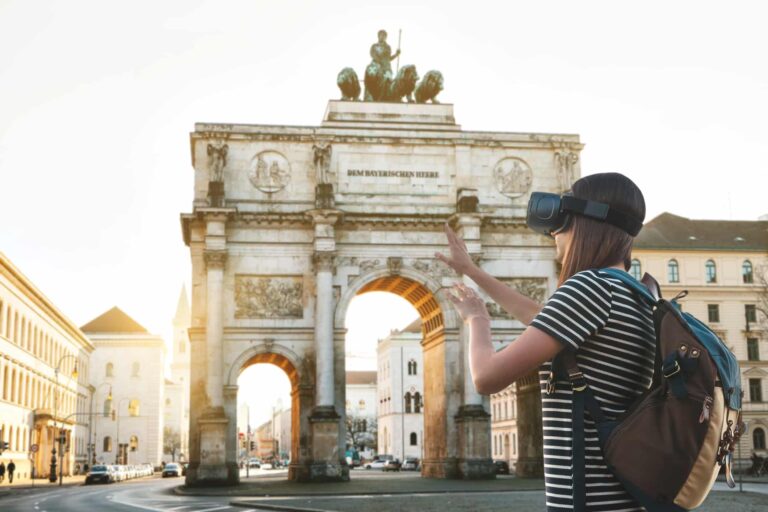
Static plaques leave tourists disengaged, while AR storytelling apps effectively transport people across time at heritage sites! Old wartime photographs are overlaid at battlefield ruins through 3D modeling, coupled with battle sound effects for vivid WWII recreations.
At archaeological sites, scans of ancient pots may trigger historical character animations about their mythological significance in ancient times! Such immersive annotations make heritage come alive meaningfully. Visitors can even click digital souvenirs for insta-worthy memorabilia.
Enriched Hotel Stays
Resorts use AR to deliver next-gen hospitality services and amenities. Confirm your arrival through facial recognition doors, receive personalized greetings from a realistic humanoid concierge, and view nearby facilities and services through an AR hotel map.
Order room service via gesture controls, try on complimentary 3D makeup from the comfort of your rooms, or customize your mini-bar and ambiance with AR-enhanced menus! Post-pandemic, such contactless, futuristic stays are greatly desired.
Safer Adventuring
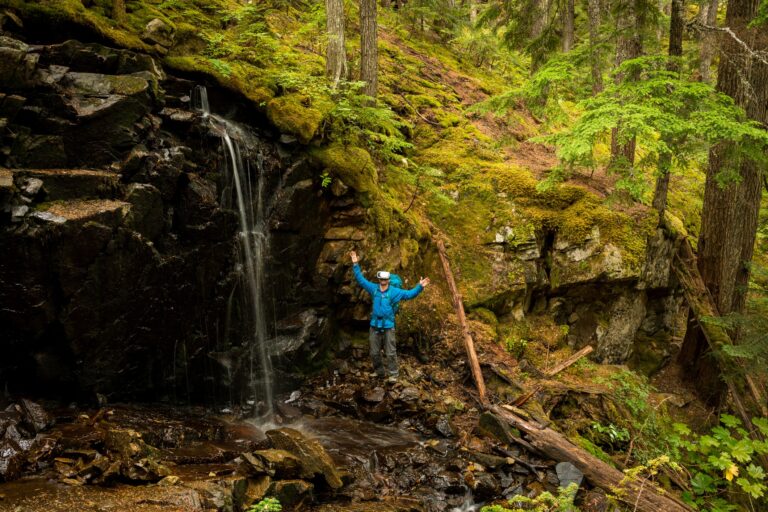
Venturing off the beaten track often means language barriers, safety risks, and a lack of warning infrastructure for tourists. Here, AR apps prove invaluable through real-time multilingual translations, hazard alerts, and navigation assistance.
Using visual positioning tech, terrain maps notify travelers regarding upcoming inclines, water bodies, or rock falls along trekking routes. Embedded mini-quizzes test environmental knowledge while SOS signals provide peace of mind during emergencies
Reduced Travel Footprint

Given its resource-intensive nature, global tourism generates nearly 8% of total greenhouse emissions as of 2022. AR offers a sustainable solution, allowing people to digitally experience fragile natural habitats like coral reefs or cultural sites vulnerable to overcrowding like Machu Picchu through immersive simulations.
Such virtual visits to tourism businesses minimize transportation emissions and site congestion considerably. Apps also educate tourists regarding eco-friendly travel practices before actual trips
Enlivened Flight/Drive Experiences
Layovers and long drives often induce boredom, and AR delivers engagement en route! Airline apps allow passengers to play location-based games by scanning seatback screens, caricature themselves atop real-time views from airplane windows, or learn their altitude through AR planes taking off their tray tables.
Similarly, AR windshield displays in cars can overlay points of interest and safety warnings based on terrain and play educational audio content, making road trips more eventful.
Seamless Business Travel

AR enhances professional trips by saving time and aiding networking. Interactive 3D venue maps help attendees navigate convention centers quickly by orienting them based on registration desk scans. AR name badge scans trigger the display of conference goers’ profile data and social links, making connections seamless.
During presentations, AR allows attendees to tally polls, take notes, rate sessions, and visualize data – no more losing paper surveys. Such AR perks are invaluable for optimized business travel.
Accessible Exploration
Travel should empower everyone equally. Accordingly, AR makes exploration more inclusive for the elderly and those with disabilities. Realistic AR simulations allow those unable to hike to traverse mountain trails through digital avatars, while captioning and magnified scans assist people with vision or hearing limitations in navigating solo.
Visitors who use wheelchairs can experience ranges of motion beyond physical capacities via drone filming trips. Such assistive use cases uplift marginalized groups.
Personalized Shopping

Shopping for locally relevant souvenirs is challenging, given the unique wares and artifacts associated with places. AR allows tourists to instantly visualize artifacts in their homes before purchasing through 3D modeling.
Apps curate recommendations for local businesses based on travelers’ explicitly input preferences, past purchase behavior, and even home layouts and designs! Some even suggest local alternates for internationally shipped products, reducing delivery footprints. Talk about intuition and convenience.
Immersive Cuisine Discovery

One cannot divorce cuisine from culture, and AR storytelling apps transport food discovery into the bustling kitchens and exotic villages they originate from! Through AR simulations, see how rice terraces or spice plantations operate while chefs guide you step-by-step through cooking traditional dishes.
Receive mini-history lessons regarding culinary influences as you walk through digitally recreated ancient marketplaces! Such experiential browsing makes gastronomic exploration sensory and memorable.
The Future of AR in Tourism
AR has unleashed promising new means for people to find, plan, and enjoy travel while protecting fragile ecosystems. As the technology matures, expect more profound virtualization across planning portals, operators, destinations, and travel-based social sharing. Travel websites will offer more immersive previews through 3D room scans and interactive venue maps. Tour operators can cut costs via AR-guided self-navigated tours instead of guides.
Destinations can sustainably manage crowds by offering alternates like virtual queue tickets during peak seasons. Environmentally conscious travelers can opt for AR tours rather than physically burdening ecosystems through visits. Social media will brim with travelers’ augmented photos and stories using graphic filters and geotagged animation stickers. The future is an undoubtedly augmented one for the tourism industry!
Before your next holiday, download multi-lingual AR guide apps that offer the full suite of services – airport navigators, interactive venue explorers, real-time translators, virtual shopping assistants, and visual travel planners. Why choose between convenience and sustainability when thoughtfully designed augmented reality technology offers both extraordinarily? Immerse into travels physically and virtually for the most wholesome and responsible journeys ahead!
Frequently asked Questions (FAQs)
1. How popular is AR currently among travelers?
Surveys indicate over 60% of travelers want destinations to offer AR experiences, and roughly 30% have already used AR travel apps. The adoption of tourism augmented reality travel businesses is rapidly rising.
2. What kind of hardware is required to experience AR during trips?
Most travel and tourism-related AR services only require smartphones or tablets with cameras and internet connectivity. However, some experiences may mandate headsets.
3. Are there risks associated with AR use in travel?
Yes. Intrusive advertising, motion sickness from prolonged use, tech dependencies, and privacy risks are common concerns the AR industry is working to address.
4. Can AR negatively impact the traditional cultural fabric of destinations?
Some critics argue immersive AR technology could eventually substitute authentic real-world experiences. However, responsible AR aims to have new technologies meaningfully complement rather than replace existing cultures.
5. Will AR make tour guides obsolete?
Not so fast! While many AR-enabled travel apps can dispense basic travel directions and information, local tour guides provide valuable human connections to off-the-beaten-path locations that apps simply cannot replicate.
So get ready for AR-enhanced vacations and bon voyage! May all your future trips be truly immersive travels through the physical and virtual dimensions. And if “beaming up” becomes real someday, trust augmented and virtual reality to beam you across worlds instantly!
